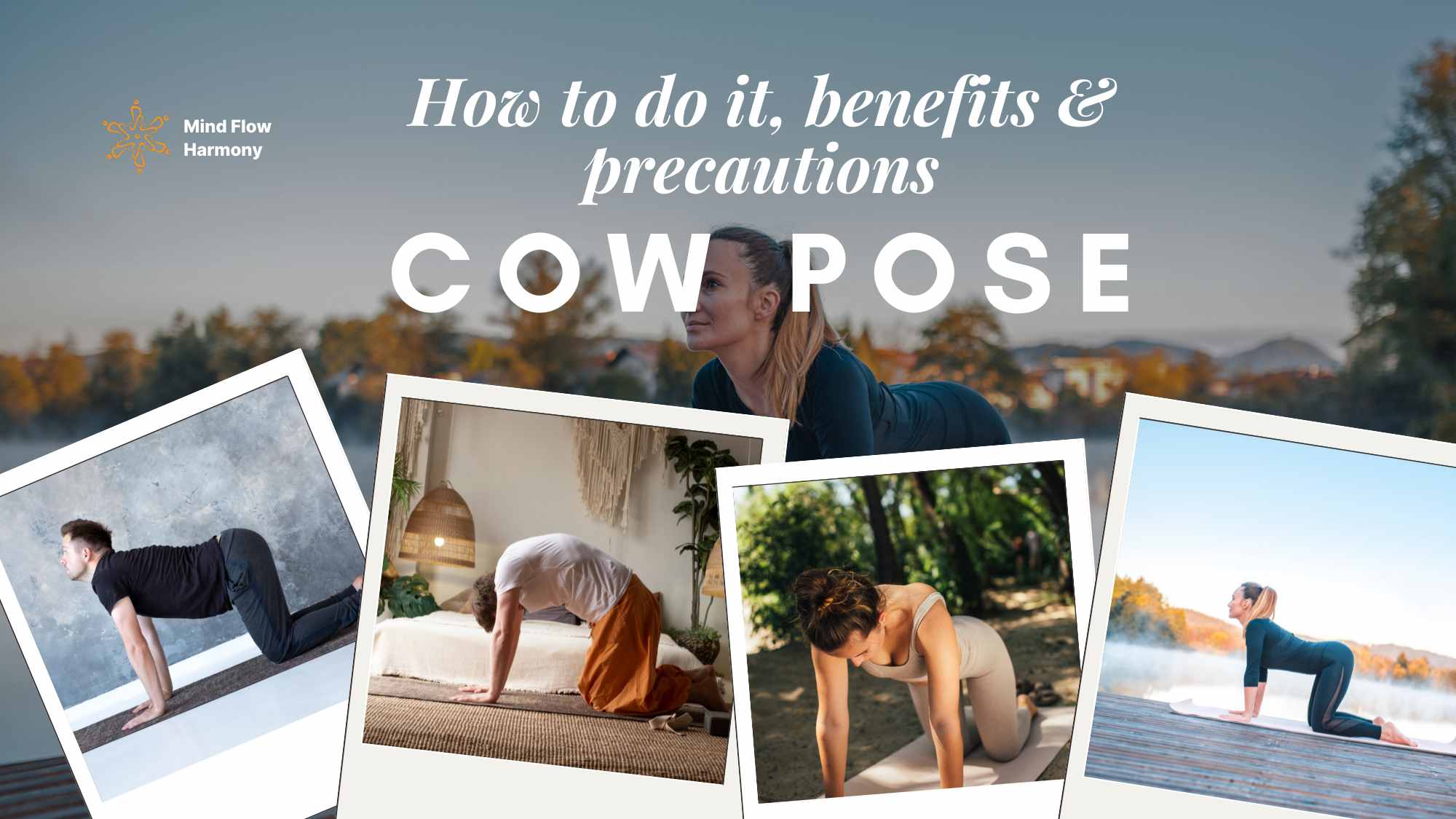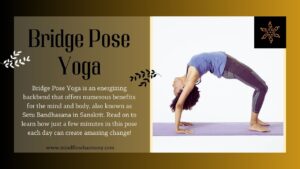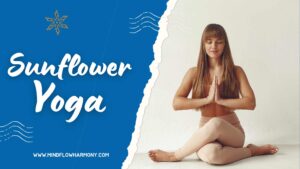Yoga is a holistic kind of exercise that includes many poses that improve human wellness in general. Cow pose or Bitilasana is one of the best yoga poses for body relaxation. Try adding cow posture to your yoga practice to help you unwind or maintain a flexible and strong spine. This blog will take you to the complete guide of cat-cow yoga poses along with its benefits and practical steps.
Bitilasana: What is it
The base of many advanced yoga poses is the Cow position, also known as Bitilasana, a basic yoga stance. Often performed with its opponent position, Marjariasana (cat position), the cow pose is a spine-warming practice. Hence, the term “cow pose.”
The body is positioned in a manner reminiscent of a cow. This pose serves as a sort of foundation for other yoga backbends.
Cow pose Philosophy
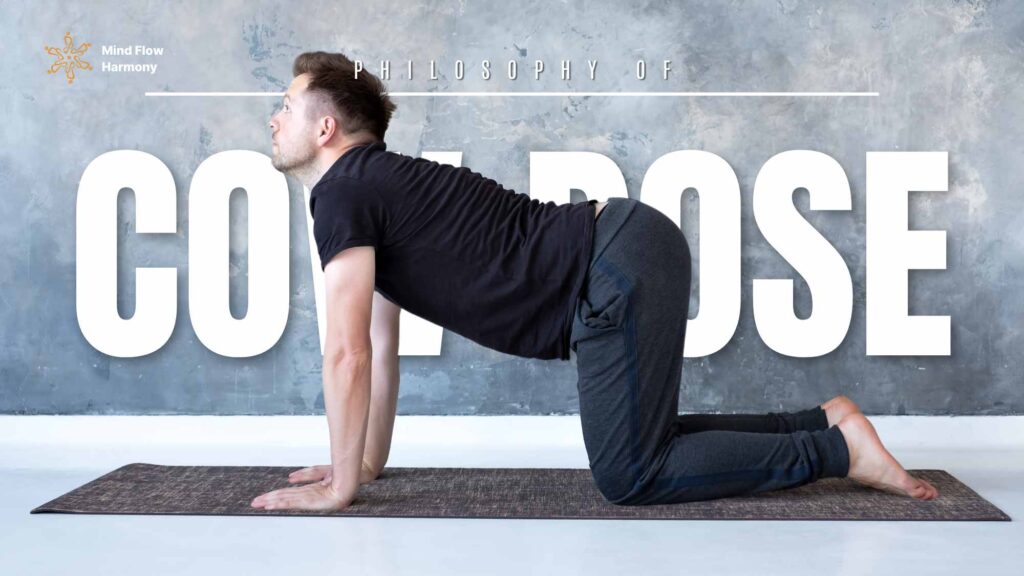
Cow position in yoga philosophy symbolises the personification of the holy feminine. The position represents the mother goddess’s nurturing and nourishing nature, which gives all life support and nutrition. Upon entering the Cow yoga, you have the opportunity to develop qualities associated with feminine energy like stability, openness, and groundedness.
Cow pose also helps us to connect with our breathing pattern and to be in the present moment.
How does the cow pose work?
The pronunciation of Bitilasana is (Bit-ill-AH-sun- ah). This kind of Bitilasana is a backbend and chest opening. Cow Position is examined as a starting point because it allows for positional variances. This easy pose allows for a powerful stretch of the front of the body from the chin to the pubic bone.
The lower back, hips, core, and lower spine are all stretched in this pose. Breathing becomes easier as a result of this opening up the lungs and chest. By adjusting the spine in this manner, you can strengthen your back muscles. You can also increase your spine’s flexibility, and regenerate the bone marrow by creating space between each vertebra.
Beginner’s tips for practice:
- You should warm up your hands and wrists before doing this yoga pose if you are not accustomed to lifting weights with your hands.
- Make a fist first, then spread your fingers; swiftly repeat a few times. You should remove your hands after rotating your wrists to accomplish this.
- If this is your first time performing this pose, you should take precautions to safeguard your neck. You can lift your shoulder blades away from your ears and expand them to secure your neck region.
How to do Cow pose – Bitilasana
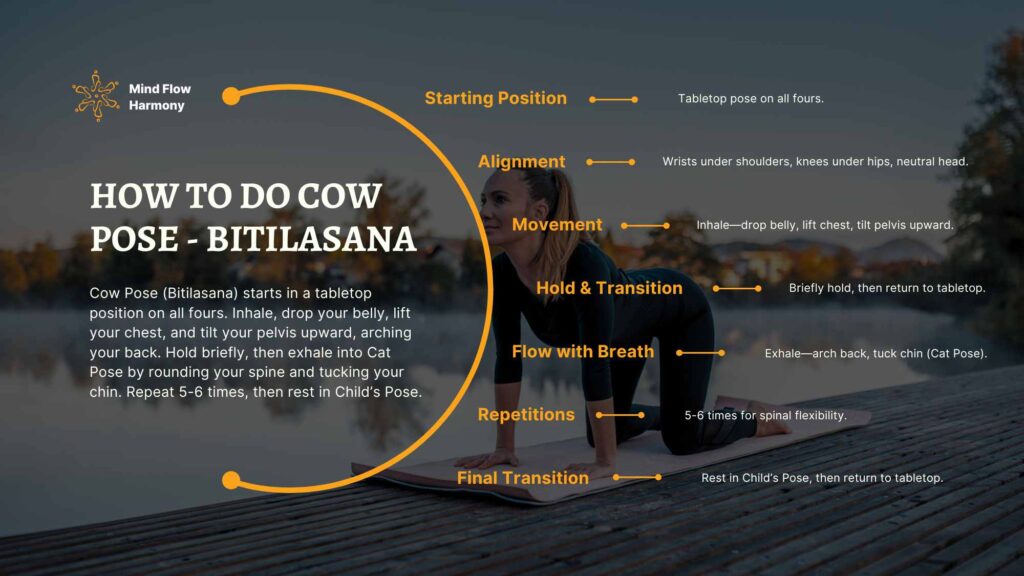
- Assume a tabletop pose on all fours from Tadasana.
- Place your wrists beneath your shoulders on the ground and your knees under your hips.
- Maintain a neutral head position and look down at the ground.
- Breathe in, extending your chest downward and raising your buttocks to the ceiling.
- Your head should rise as your eyes are closed, and your back should be arched when your abdomen falls to the ground.
- Keep the position for a short while.
- Release the tension in your back and raise your head to the centre to assume the tabletop position.
- In the flow, another posture comes after it. Exhaling causes the chin to go towards the chest, arching your back upward.
- Repeat these two spinal-stretching exercises five or six times, raising your head and arching your spine while bringing your chin to your chest.
- After that, ease back into child posture and return to tabletop pose.
Precautions of cow pose:
- If you have a neck injury, avoid practising it.
- If you have a weak neck, look ahead rather than straining it by looking up.
- Do not attempt bitilasana yoga if you have knee pain. Put a blanket under your knees if you get pain in your feet.
- Please only perform any asana under the guidance of a qualified yoga teacher.
- When doing this position, people with ganglion cysts or carpal tunnel syndrome need to use caution.
- Those with ganglion cysts or carpal tunnel syndrome should also refrain from doing this stance.
- Even though this pose doesn’t hurt, if you do experience any discomfort, ease out of the pose.
Bitilasana (Cow Pose) Variation
To create a balancing position, extend the opposing arm and leg as you inspire. Curl your enlarged knee and elbow into your chest as you lie down. Return to the centre and alternate sides, allowing your breath to change.
Version for sitting:
- Take a seat in a chair or just cross your legs.
- When you take a breath in, place your hands on your knees and open your chest.
- On the exhale, add the Cat Position.
Version for standing:
- Place your legs hip-width apart and bend your knees.
- When you take a breath in, place your hands on your thighs and open your chest.
- On the exhale, add the Cat Position.
Try making a wave motion from all fours by moving your tailbone first and allowing your spine to follow. By extending your opposing arm and leg in the Cow position and then pulling your elbow back and your knee to your nose as you draw your belly in and round your back in the Cat position, you can turn a Cat-Cow sequence into a core-stirring exercise.
Benefits of practicing Cow Pose
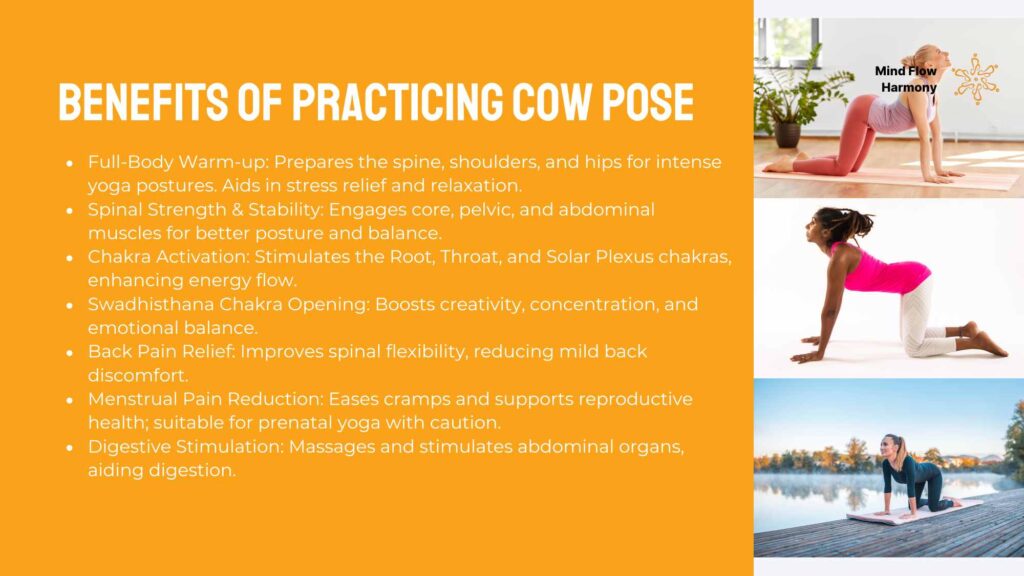
Helps overall body
It is a fantastic pose to incorporate with other spinal exercises like the cat posture, side curves, and twists as a warm-up before class. Warming up your spine, shoulders, and hips in the cow position prepares your body for a strenuous yoga pose. It can be soothing, calming, and useful for stress management.
Strengthening and Stability of the Spine
The fundamental idea behind Bitilasana Marjariasana, also known as the Cat-Cow Pose, is the activation of the spinal or core muscles. The pelvic muscles and abdominal muscles work together to support and stabilise the body as the practitioners alternate between Cow and Cat Pose.
Influences chakras for energy
Because the stretches involved in this basic posture also awaken the three chakras, it offers several benefits. Deep stretching of the neck, navel, and abdomen opens the Root, Throat, and Solar Plexus chakras.
Opens the Chakra of Swadhisthana
When blocked, the Swadhisthana Chakra, commonly referred to as the second Chakra, is linked to severe emotional upheaval and sadness. The movement, when nourished and stimulated, improves creativity as well as concentration and learning!
Reduces back discomfort
Do you have excruciating back pain? So this position is beneficial. Regularly achieving the cat-cow yoga can help reduce mild back discomfort by increasing spinal muscular elasticity and releasing stress.
Reduces the pain associated with menstruation
The breathing-matched Menstrual cramps and pain are relieved by Marjaryasana/Bitilasana. Given that it tones women’s reproductive organs, it is also a component of prenatal yoga. But when executing the cat and cow pose, try not to squeeze your abdomen too hard if you are pregnant.
Provokes the abdominal organs
Digestion can be facilitated by the Cat-Cow Pose’s mild compression and release of the abdominal area, which stimulates and massages the organs.
What are the postures that follow Bitilasana?
Start in the cow position and work your way up the wall with your legs. When you’re about to complete it, combine the cow and cat positions to let the energy release.
- Cat Position: Marjaryasana
- Child’s Position: Balasana
- Bending Forward: Uttanasana
Conclusion
Any yoga practice would benefit from adding cow posture, which is simple to adapt to your own needs and skill level. It’s necessary to pay attention to your body throughout any yoga position and to pause if you experience any pain or suffering while practising yoga.

